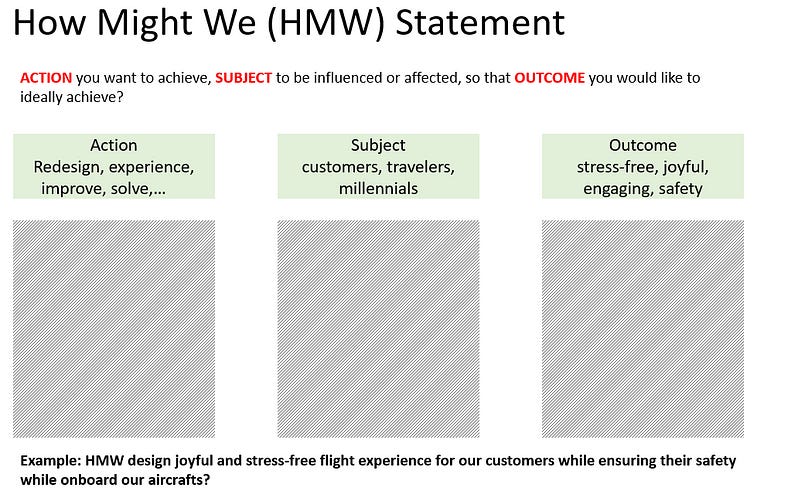How Might We statement
Get ready to take your design thinking game to the next level with one of the most exciting tools in the toolkit: the HMW (How Might We) statement!
In just five minutes, I'll show you how to master this technique with a fun and informative Q&A session.
So, let's dive in and unleash our creativity!
Have you heard of HMW (How Might We) statements?
They're questions designed to spark ideas during brainstorming sessions.
Why use them?
To focus on creating solutions that address the needs and pain points of the people you're designing for.
What are the benefits?
They remind everyone involved of what matters most to customers and why.
How do you get started?
Gather a small group of 3-7 people and have a facilitator who understands what makes a good HMW statement. The facilitator should also have data on the target group and their needs.
If you’re a facilitator, it’d be helpful to spend some time to gather data that will help inform about your target group (i.e., customers/users) and their needs and pain points.
If the people in the room don’t have a solid understanding of what customers/users needs, business drivers etc., don’t proceed. Go get data to be better informed.
Here's a step-by-step approach to creating HMW statements:
1. Identify, discuss and write down:
what are your customers/users need?
What are their pain points?
2. Cluster needs and pain points across commonalities by giving a title to each cluster of needs and pain points.
3. Review your clusters and look for insights and patterns and write them down. Insights is the understanding of a specific cause and effect within a particular context.
4. Based on clustered data and insights, write down HMW statements as many as you can come up with.
For example,
“How might we redesign air travel?” is too broad.
“How might we reimagine aircraft seats?” can be too specific and limiting.
“How might we design joyful and stress-free flight experience for our customers while ensuring their safety while onboard our aircrafts?” is appropriate.
5. Now is the time to ask your working group to vote for the top 3–5 HMW statements to bring to your ideation session.
Here is an example of what HMW statement might look like:


